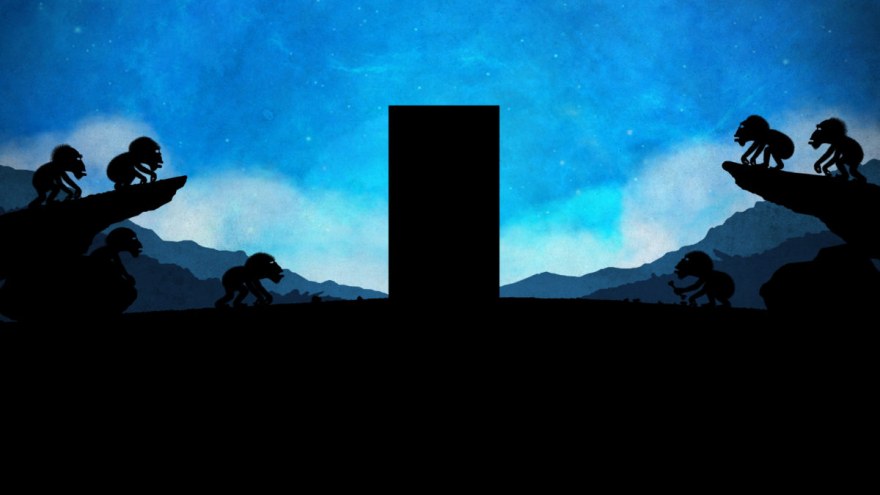Breakfast with Bendito Machine VI
An interview with Jossie Malis Alvarez, director of Bendito Machine VI
How did you get the inspiration to make Bendito Machine VI?
I wanted to tell a story about the complexities and uncertainties of our future. I consider myself a pessimistic technophile, I am fascinated and enthusiastic about technological advances, but at the same time I am concerned and disturbed by the possibilities we face, not so much for the personal use of all these advances, but rather for how they are shaping and creating new social behaviors. When I started with the project of Bendito Machine, there were no social networks, no smartphones or fragmented content as we are used to now, and I found it interesting and fun to develop the intertwined story of a technological encounter between primitive beings and a more familiar future related to space exploration, from there I allowed myself the freedom to let both stories evolve in their own way and end up becoming one.
How did you create and animate the drawings?
I develop all the designs on paper and once defined they are transferred to vector graphics. Once redesigned, most of the elements and characters are set to animate them in cut-out while others are animated in a traditional way.
What were you interested in when pointing a finger at technologies supposed to be “smart” like smartphones?
I found the idea of telling a story related to this technology very appealing, there is no doubt that it is the most revolutionary and massive technological breakthrough of recent years after the arrival of the Internet and it is amazing to think that it has been almost 160 years since the invention of the telephone and to see today how these primitive devices have intertwined with the Internet and hundreds of other technologies to transform them into our little demons. We can no longer live without them and depend on them even to go to the bathroom in peace. It’s amazing how a small device has transformed practically the entire planet in such a short time, but the irony of it all is how such a powerful tool, which in addition to harboring all the information and tools for whatever you can think of, has ended up becoming more like the Snow White magic mirror than anything else.
How did you shape the little rover? Why was his path necessary to the story?
When I began to develop the film, I was interested in the idea of having two independent storylines. From the beginning I knew that one of these paths would be the hominids, but I was not entirely sure what the other story would be. At one point I assumed that this second story had to have a component of human origin but without the biological presence of humans and that’s when our beloved Rover came on stage. The Rovers, Curiosity in particular, have very humanoid elements that turn them into characters with a lot of personality. It was a lot of fun working with him and punishing him a little. I’ve spent practically my whole life following step by step the space exploration and seeing live the Curiosity rover landing on Mars has been one of the most fantastic and exciting experiences that have left a mark on me. Somehow it is a tribute to that spatial feat, but at the same time a story of destruction and transformation.
Do you often tackle the mysteries of life and evolution? Do you have further projects on this theme?
Yes, these are the issues I am most passionate about, in particular our relationship with the planet we live on, technology and our evolution as species. In the end it is all these elements that define us as intelligent creatures and it is these relationships that will dispose of our whole future as social beings, with all the good and bad that this implies. It is science fiction itself through writing and cinema that has been shaping where we are now and it is not unrealistic to imagine where we are heading with current technology. These are the topics I’m really interested in exploring.
What sort of freedom would you say the short format allows?
Above all it is the challenge of condensing in a short time a story with enough elements to describe different ideas in a single narrative structure. To be able to play with freedom and with endless possibilities and visual resources in a short time. I recognize that in this sense, by working with a small team, I allow myself the possibility of improvising a lot during development and rethinking paths. I never close myself to a definitive story and even though animation doesn’t allow much space for planning, I’m reassured to have that freedom and to be able to readjust what is necessary during development.
If you’ve already been to Clermont-Ferrand, could you share with us an anecdote or story from the festival? If not, what are your expectations for this year?
It’s my first time in Clermont-Ferrand. I haven’t had the chance to attend the festival and I’m quite anxious doing so for the first time with a short film on the programme and also as an official premiere, but in the end I just want the day of the premiere to arrive and watch the film on big screen with many people in the dark, besides an overdose of great short films during that week, and parties, friends, food… Promising days!
Bendito Machine VI is being shown in Lab Competition L4.








